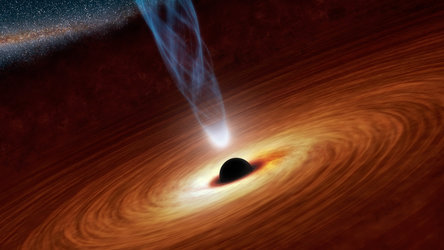Mysterious magnetar boasts one of strongest magnetic fields in Universe
Scientists using ESA’s XMM-Newton space telescope have discovered that a curious dead star has been hiding one of the strongest magnetic fields in the Universe all along, despite earlier suggestions of an unusually low magnetic field.
The object, known as SGR 0418+5729 (or SGR 0418 for short), is a magnetar, a particular kind of neutron star.
A neutron star is the dead core of a once massive star that collapsed in on itself after burning up all its fuel and exploding in a dramatic supernova event. They are extraordinarily dense objects, packing more than the mass of our Sun into a sphere only some 20 km across – about the size of a city.
A small proportion of neutron stars form and live briefly as magnetars, named for their extremely intense magnetic fields, billions to trillions of times greater than those generated in hospital MRI machines, for example. These fields cause magnetars to erupt sporadically with bursts of high-energy radiation.
SGR 0418 lies in our galaxy, about 6500 light years from Earth. It was first detected in June 2009 by space telescopes including NASA’s Fermi and Roscosmos’ Koronas-Photon when it suddenly lit up in X-rays and soft gamma rays. It has been studied subsequently by a fleet of observatories, including ESA’s XMM-Newton.
“Until very recently, all indications were that this magnetar had one of the weakest surface magnetic fields known; at 6 x 1012 Gauss, it was roughly a 100 times lower than for typical magnetars,” said Andrea Tiengo of the Istituto Universitario di Studi Superiori, Pavia, Italy, and lead author of the paper published in Nature.
“Understanding these results was a challenge. However, we suspected that SGR 0418 was in fact hiding a much stronger magnetic field, out of reach of our usual analytical techniques.”
Magnetars spin more slowly than neutron stars, but still complete a rotation within a few seconds. The normal way of determining the magnetic field of a magnetar is to measure the rate at which the spin is declining. Three years of observations of SGR 0418 had led astronomers to infer a weak magnetic field.
The new technique developed by Dr Tiengo and his collaborators involves searching for variations in the X-ray spectrum of the magnetar over extremely short time intervals as it rotates. This method allows astronomers to analyse the magnetic field in much more detail and has revealed SGR 0418 as a true magnetic monster.
“To explain our observations, this magnetar must have a super-strong, twisted magnetic field reaching 1015 Gauss across small regions on the surface, spanning only a few hundred metres across,” said Dr Tiengo.
“On average, the field can appear fairly weak, as earlier results have suggested. But we are now able to probe sub-structure on the surface and see that the field is very strong locally.”
A simple analogy can be made with localised magnetic fields anchored in sunspots on the Sun, where a change in configuration can suddenly lead to their collapse and the production of a flare or, in the case of SGR 0418, a burst of X-rays.
“The spectral data provided by XMM-Newton, combined with a new way of analysing the data, allowed us to finally make the first detailed measurements of the magnetic field of a magnetar, confirming it as one of the largest values ever measured in the Universe,” adds Norbert Schartel, ESA’s XMM-Newton Project Scientist.
“We now have a new tool to probe the magnetic fields of other magnetars, which will help constrain models of these exotic objects.”
Notes for Editors
To read this news article in depth, see Weakling magnetar reveals hidden strength on ESA’s Science & Technology pages.
“A variable absorption feature in the X-ray spectrum of a magnetar,” by A. Tiengo et al is published in Nature, 15 August 2013.
For further information, please contact:
Markus Bauer
ESA Science and Robotic Exploration Communication Officer
Tel: +31 71 565 6799
Mob: +31 61 594 3 954
Email: markus.bauer@esa.int
Andrea Tiengo
Istituto Universitario di Studi Superiori and Istituto Nazionale di Fisica Nucleare Pavia, Italy and Istituto di Astrofisica Spaziale e Fisica Cosmica/INAF Milan, Italy
Email: andrea.tiengo[@]iusspavia.it
Phone: +39-0382-375865 or +39-02-23699-468
Norbert Schartel
XMM-Newton Project Scientist
Tel: +34 91 8131 184
Email: Norbert.Schartel@sciops.esa.int















 Germany
Germany
 Austria
Austria
 Belgium
Belgium
 Denmark
Denmark
 Spain
Spain
 Estonia
Estonia
 Finland
Finland
 France
France
 Greece
Greece
 Hungary
Hungary
 Ireland
Ireland
 Italy
Italy
 Luxembourg
Luxembourg
 Norway
Norway
 The Netherlands
The Netherlands
 Poland
Poland
 Portugal
Portugal
 Czechia
Czechia
 Romania
Romania
 United Kingdom
United Kingdom
 Slovenia
Slovenia
 Sweden
Sweden
 Switzerland
Switzerland





























